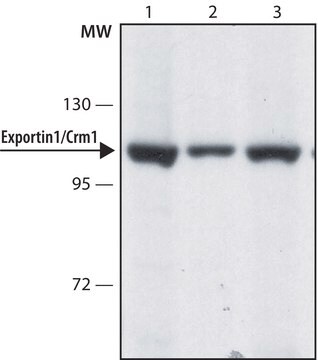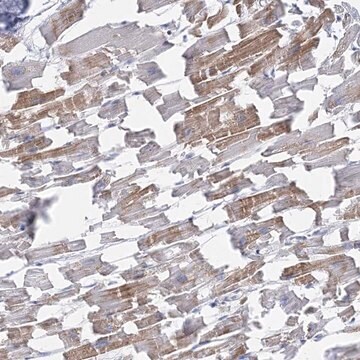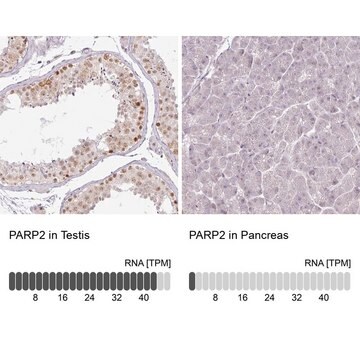Key Documents
SAB4200146
Anti-AMSH-LP / STAMBPL1 (C-terminal) antibody produced in rabbit
~1 mg/mL, affinity isolated antibody
Synonim(y):
Anti-ALMalpha, Anti-AMSH-FP, Anti-AMSH-like protease, Anti-STAM binding protein-like 1, Anti-associated molecule with the SH3 domain of STAM (AMSH) like protein
About This Item
Polecane produkty
pochodzenie biologiczne
rabbit
białko sprzężone
unconjugated
forma przeciwciała
affinity isolated antibody
rodzaj przeciwciała
primary antibodies
klon
polyclonal
Postać
buffered aqueous solution
masa cząsteczkowa
antigen ~50 kDa
reaktywność gatunkowa
monkey, canine, human, rat, bovine, mouse
opakowanie
antibody small pack of 25 μL
stężenie
~1 mg/mL
metody
indirect immunofluorescence: 5-10 μg/mL using human HeLa cells
western blot: 2.5-5.0 μg/mL using whole extracts of mouse NIH-3T3 cells
western blot: 5-10 μg/mL using using whole extracts of rat NRK cells
numer dostępu UniProt
Warunki transportu
dry ice
temp. przechowywania
−20°C
docelowa modyfikacja potranslacyjna
unmodified
informacje o genach
human ... STAMBPL1(57559)
mouse ... Stambpl1(76630)
Opis ogólny
Zastosowanie
- immunoblotting
- immunofluorescence
- western blotting
Działania biochem./fizjol.
Postać fizyczna
Oświadczenie o zrzeczeniu się odpowiedzialności
Nie możesz znaleźć właściwego produktu?
Wypróbuj nasz Narzędzie selektora produktów.
Kod klasy składowania
10 - Combustible liquids
Temperatura zapłonu (°F)
Not applicable
Temperatura zapłonu (°C)
Not applicable
Certyfikaty analizy (CoA)
Poszukaj Certyfikaty analizy (CoA), wpisując numer partii/serii produktów. Numery serii i partii można znaleźć na etykiecie produktu po słowach „seria” lub „partia”.
Masz już ten produkt?
Dokumenty związane z niedawno zakupionymi produktami zostały zamieszczone w Bibliotece dokumentów.
Nasz zespół naukowców ma doświadczenie we wszystkich obszarach badań, w tym w naukach przyrodniczych, materiałoznawstwie, syntezie chemicznej, chromatografii, analityce i wielu innych dziedzinach.
Skontaktuj się z zespołem ds. pomocy technicznej





![(3RS)-9-Fluoro-3-methyl-10-(4-methyl-4-oxidopiperazin-1-yl)-7-oxo-2,3-dihydro-7H-pyrido[1,2,3-de]-1,4-benzoxazine-6-carboxylic acid certified reference material, TraceCERT®, Manufactured by: Sigma-Aldrich Production GmbH, Switzerland](/deepweb/assets/sigmaaldrich/product/structures/366/816/7f46918d-8faa-4d56-a456-b7eb211d6ae9/640/7f46918d-8faa-4d56-a456-b7eb211d6ae9.png)


